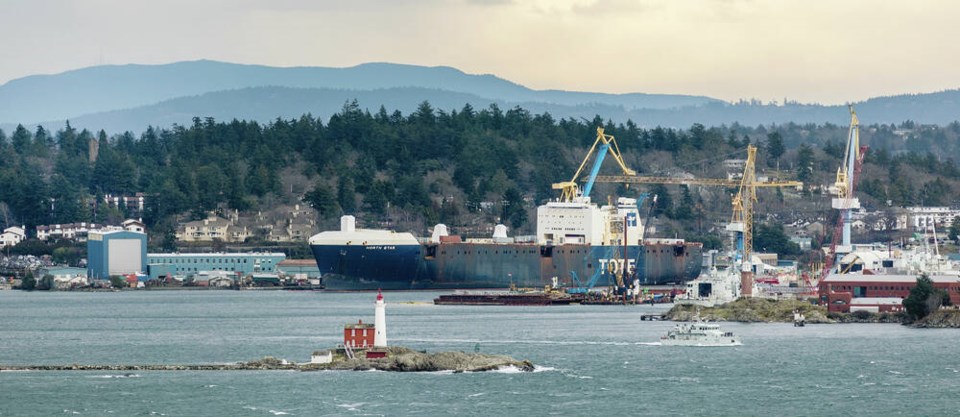Scarcity of supply and continued demand for space on Vancouver Island have translated into industrial properties in the capital region seeing between a 10 and 20 per cent year-over-year increase in property valuations, according to B.C. Assessment.
It’s a sign of a resilient economy, said Jodie MacLennan, deputy assessor.
“We’ve seen a strong road to recovery for industrial and commercial properties across the Vancouver Island region for the 2022 and 2023 roll years,” said MacLennan. “These properties are in high demand.”
Ty Whittaker, vice-president with Colliers International Victoria, said the market for industrial land has been challenging as a result of rising interest rates, but there are still companies looking for space and there are still multiple offers for quality industrial sites.
“Our market still remains really highly sought after, so I still think we’re in really good shape going forward and once there’s just some stability in the debt market we’ll be fine,” he said.
Whittaker said the most recent data show the industrial vacancy rate remains at a record low of 0.2 per cent.
“Land values have all been increasing, as well as there are so few zoned industrial properties in the CRD to enable companies to grow and expand their operations,” he said. “Cost of construction unfortunately has continue to rise, which has actually halted planned developments so we also need some stability on that front.”
The assessment values reflect the strong demand.
The most valuable industrial property on the assessment roll in Greater Victoria was 2881 Amy Rd. in Langford, the Sysco warehouse, which was assessed at $51.4 million as of July 1, 2022, up from $48.5 million a year earlier.
Values on the 2023 assessment roll are based on market value as of July 1, 2022.
The property roll’s most valuable industrial property on the Island is Catalyst Paper’s mill in Duncan at 8541 Hay Rd. It was valued at $152 million.
But there are more valuable industrial properties that do not make the roll each year, but whose valuations reflect just how valuable the land is.
For example, the Department of National Defence dockyard facility was assessed at $455 million in this year’s roll, up from $437 million last year, Victoria International Airport’s main terminal was valued at $107 million this year, up from $83.5 million last year, the Esquimalt Graving Dock was assessed at $88.6 million this year, up from $87.3 million last year and the Swartz Bay ferry terminal was valued at $54 million, up from $48 million a year ago.
MacLennan said the majority of properties in the province are assessed at market value in accordance with the Assessment Act, but many government properties have other considerations when determining assessments. She noted they may not pay property taxes, but instead provide grants in lieu to the municipalities where the properties sit.
“Typically, these properties are not traded in the open market and are not subject to the same taxation scheme as other industrial properties,” she said. “So, given the uniqueness of these properties and their assessments, it doesn’t make sense to include these in the market value assessments.”
B.C. Assessment classifies industrial properties as those that consist mainly of warehouses utilized for a variety of storage, manufacturing, transportation, automotive and other industrial-type uses.
The industrial properties are split into two classes — major industry like mills, shipbuilding facilities and industrial plants and light industry, which includes properties that process, manufacture and transport products.
MacLennan said while residential properties are based on current sales, size, age, quality, condition, view and location of a property, industrial properties are typically valued using an income approach that will look at what any property may generate for an owner.


